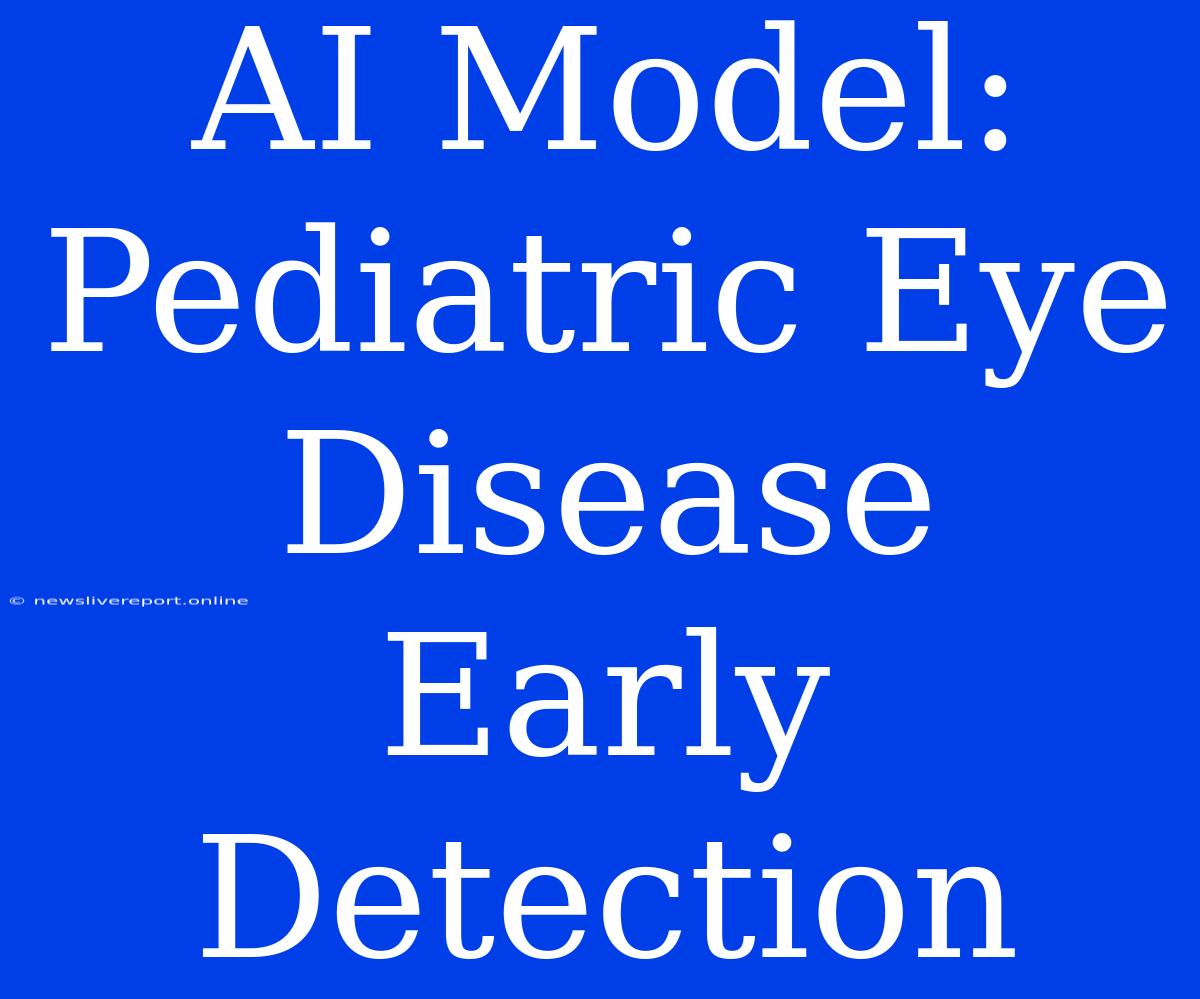AI Model: Pioneering Early Detection of Pediatric Eye Diseases
The future of pediatric eye care is bright, thanks to the rapid advancements in artificial intelligence (AI). AI models are proving to be game-changers in the early detection of eye diseases in children, potentially revolutionizing how we diagnose and treat these conditions.
The Need for Early Detection
Early detection is crucial in pediatric eye care as many eye diseases can have a significant impact on a child's vision development and overall well-being. Untreated conditions can lead to permanent vision loss, learning difficulties, and social challenges. Traditional methods of eye examinations can be time-consuming, require specialized expertise, and sometimes miss subtle signs of disease. This is where AI steps in.
AI Model: A Powerful Tool for Pediatric Ophthalmology
H2: How AI Models Are Making a Difference
AI models trained on massive datasets of images and clinical data are now capable of:
- Automated Image Analysis: AI can analyze retinal images and identify patterns associated with specific eye diseases. This allows for faster and more accurate diagnosis, even in cases where human examiners might miss subtle anomalies.
- Predictive Modeling: AI algorithms can predict the likelihood of developing certain eye diseases based on a child's genetic predisposition, family history, and other risk factors. This allows for proactive intervention and early treatment, potentially preventing severe vision loss.
- Screening and Triage: AI-powered tools can assist in efficiently screening large populations of children for eye diseases. This allows for more targeted and effective use of specialist resources.
H2: Benefits of AI-Driven Early Detection
- Improved Accuracy and Speed: AI models offer increased accuracy and efficiency compared to traditional methods, leading to faster diagnoses and treatment initiation.
- Reduced Burden on Specialists: By automating tasks, AI can free up ophthalmologists to focus on more complex cases, leading to better patient care and reduced wait times.
- Early Intervention and Prevention: Early detection allows for timely treatment, minimizing the impact of eye diseases and potentially preventing long-term vision problems.
- Increased Accessibility: AI-based tools can be deployed in remote areas with limited access to specialist care, making quality eye care accessible to more children.
H2: Challenges and Future Directions
Despite its immense potential, AI in pediatric ophthalmology also faces challenges:
- Data Bias and Generalizability: AI models require large and diverse datasets to ensure accuracy and generalizability across different populations.
- Ethical Considerations: The use of AI in healthcare raises ethical questions regarding data privacy, bias, and the role of human expertise.
- Clinical Validation and Adoption: Extensive clinical validation is crucial before widespread adoption of AI-powered tools in real-world settings.
H3: The Future is Bright
The future of AI in pediatric eye care is promising. Ongoing research and development are leading to increasingly sophisticated AI models with enhanced accuracy and broader applications. The integration of AI into clinical practice holds the potential to transform the landscape of pediatric ophthalmology, ensuring that every child has access to timely and effective eye care.

